Skiing is fun, but it comes with risks. The most common injuries include knee injuries (30–40%), head injuries (up to 20%), and shoulder injuries. Most injuries happen during falls (84%) rather than collisions (6%). Overconfidence, risky behavior, and lack of preparation are the main causes. However, you can minimize your risks with:
- Physical preparation: Strength, balance, and warm-up exercises.
- Proper gear: Shorter skis (like Snowfeet) reduce strain on knees and improve control.
- Safe habits: Ski within your skill level, take breaks, and stay hydrated.
Modern equipment and better safety awareness have made skiing safer, but understanding risks and using the right gear are key to avoiding injuries. Ready to hit the slopes? Stay smart and stay safe.
Après Knee - Prevention & Management of Knee injuries on the Ski Slope - by Professor Brian Devitt
Most Common Skiing Injuries and What Causes Them
Knowing the common injuries on the slopes and what causes them can help you stay safe. Interestingly, the design of traditional long skis from brands like Rossignol, Atomic, and Elan can sometimes increase the risk of certain injuries. Let’s break down the most frequent injury types, their causes, and how equipment plays a role.
Knee Injuries: ACL Tears and Strains
"Knee injuries account for roughly one-third of ski season injuries."
Knee injuries are the most common type of skiing injury. Among these, MCL (Medial Collateral Ligament) injuries top the list, making up 15–20% of all skiing injuries and 60% of knee injuries. ACL (Anterior Cruciate Ligament) tears are also a big concern, occurring in about 15–21% of knee injuries.
Traditional long skis can make matters worse. Acting like levers during a fall, they increase the force on your knees, which makes ACL injuries more likely. One classic scenario is the "phantom foot" incident, where you lose balance backward, sit on the back of your skis, and twist your knee unnaturally. Another is "Valgus External Rotation", where your center of gravity moves too far forward, putting extra stress on your knees.
"ACL injuries are commonly caused by landing a jump with poor form or while hyper-flexing the knee."
Ironically, advancements in ski, boot, and binding designs - meant to reduce leg fractures - have led to a rise in knee ligament injuries. This highlights the importance of choosing gear that helps reduce impact forces during falls, like Snowfeet* products. Understanding these mechanisms is key to preventing knee injuries.
Upper Body Injuries: Shoulder and Wrist Breaks
Falls are a major culprit when it comes to upper body injuries. Shoulder dislocations and wrist fractures often happen when skiers instinctively extend their arms to break a fall. Using the right equipment and learning how to fall safely can help reduce these risks.
Wrist injuries are particularly common when a skier’s hand gets awkwardly stuck under a ski pole during a fall. Dr. Michael Belanger, a sports injury expert at University Orthopedics, offers this advice:
"During a fall, let go of the pole so that the hand doesn't land on to that lever."
Shoulder injuries, such as dislocations, rotator cuff tears, or fractures, can result from falls or collisions with other skiers. Fatigue makes these injuries more likely, as tired muscles can’t protect your joints as effectively. Knowing these risks can help you take steps to protect yourself on the slopes.
Head and Neck Injuries
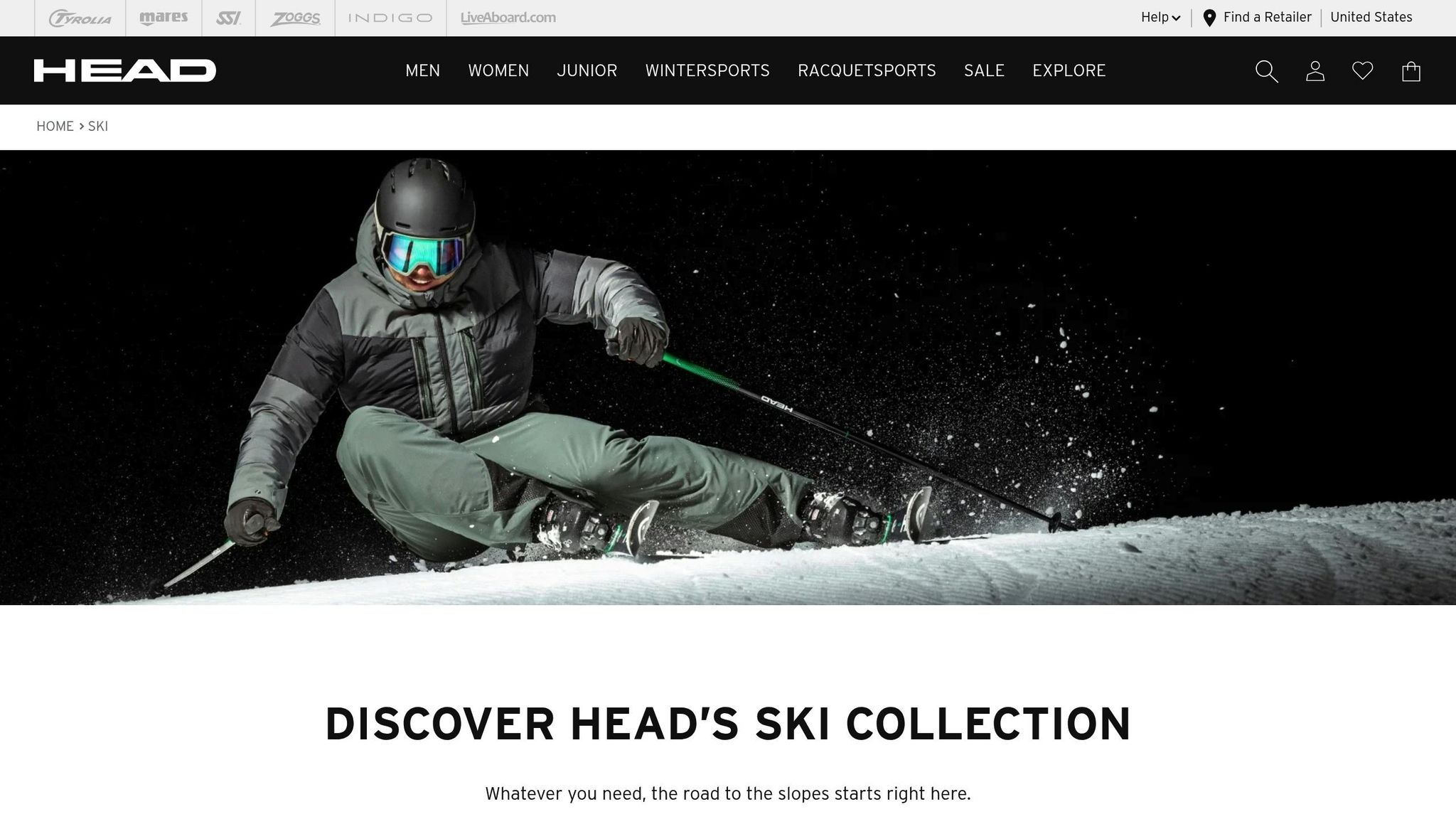
Head and neck injuries are among the most serious risks in skiing. Traumatic brain injuries (TBIs) are the leading cause of death and catastrophic outcomes in both skiing and snowboarding. While head and neck injuries make up about 13% of all skiing injuries, they often have the most severe consequences.
Male skiers are 2.2 times more likely than females to suffer head injuries. Concussions are a common concern, with 22% to 42% of head injuries involving concussion symptoms.
Most head injuries happen due to falls caused by technical mistakes or loss of control. Collisions with trees or other skiers are also significant factors. Tree collisions are the leading cause of severe head injuries, while collisions with other skiers account for 20% of injuries at slope intersections. Helmets have made a big difference in reducing head injuries, but safety doesn’t stop there. Choosing equipment that improves control and minimizes falls is just as important. Understanding these risks can help you stay safer on the slopes.
How to Prevent Skiing Injuries
The smartest way to deal with skiing injuries? Don’t let them happen in the first place. By focusing on physical preparation and selecting the right gear, you can cut down your risk of getting hurt and enjoy a safer day on the slopes.
Physical Fitness and Warm-Up Exercises
Before you even hit the slopes, it’s important to prep your body. Strength, balance, and flexibility are your best friends when it comes to staying injury-free. Pair that with a solid warm-up routine, and you’ll be setting yourself up for success.
Professional skier John Collinson knows this all too well:
"After my ACL surgeries, I learned that warm-ups and cool-downs are key to performance. It's important to get everything warmed up and activated to get muscles working together so that one muscle doesn't overwork to compensate for another." - John Collinson, Professional Big Mountain Skier
Dynamic warm-ups, which involve movement, are better than static stretches when it comes to skiing. Exercises like hip bridges, planks with leg extensions, and banded marches are great options. They get multiple muscle groups firing together, reducing the chance of one muscle overcompensating for another.
Core strength is equally important. A strong core keeps you stable and balanced, while also helping to prevent lower back pain. Don’t forget cardio, too - it boosts oxygen flow to your muscles, helping you stay energized and avoid fatigue during a long day on the mountain.
For a well-rounded approach, try this sequence:
- Start with a general warm-up.
- Practice specific skiing techniques.
- Move into a high-intensity workout.
- Add core and balance exercises.
- Finish with a cool-down, including stretching and foam rolling.
Once your body’s ready, it’s time to think about your gear.
Picking the Right Equipment
Your equipment can make or break your skiing experience - and your safety. While traditional long skis from brands like Rossignol, Atomic, and Head have been popular for years, Snowfeet* products offer an alternative that’s easier to manage and reduces injury risk.
Snowfeet* skiblades and skiskates are shorter than traditional skis, making them easier to control. This is especially helpful for beginners or anyone who wants a more laid-back experience. Their shorter length allows for quick, tight turns, which can be a lifesaver in crowded areas or terrain parks.
Short skis also come with a faster learning curve, making skiing more accessible for most people. Plus, Snowfeet* products are lightweight and compact, which means less fatigue and better control throughout the day - both of which help lower your chances of falling.
If you’re just starting out, shorter snowblades are great for skating or tricks. For those looking to carve turns, longer models might be a better fit. And don’t forget about blade width: wider blades are more stable on soft snow, while narrower ones perform better on groomed runs. Snowfeet* also offers different binding options - non-release, release, or snowboard bindings - so you can choose what feels safest and most comfortable for you.
Proper Equipment Fit and Care
Even the best gear needs to fit right and be well-maintained to keep you safe. Boots and bindings are especially important. Snowfeet* products stand out because they work with regular winter boots, which eliminates a lot of the fit issues that come with traditional ski boots.
Bindings that don’t fit properly can be a recipe for disaster. If they’re too tight, they might not release when they should, leading to knee injuries. If they’re too loose, you risk falling. Experts at the Rothman Orthopaedic Institute recommend having a trained technician adjust your bindings every year based on your height, weight, and skill level.
"Boots are your body's connection with the skis/board, so proper fit is a high priority. Focus on fit and performance above color and style. If possible, have a professional technician assist you in finding the perfect match for the size and shape of your feet." - Rothman Orthopaedic Institute Expert
Snowfeet* products make things simple - they pair with boots you already own and feel comfortable in. This minimizes pressure points and discomfort, which can otherwise throw off your control on the slopes.
On top of that, Snowfeet* gear is built to last and easy to maintain. Replacement parts like straps are readily available, so you can keep your equipment in great shape with minimal effort. That means more time skiing and less time worrying about your gear.
Safe Skiing Practices on the Mountain
Even with top-notch gear and thorough preparation, nothing beats responsible behavior when you're out on the slopes. Practicing good habits is key to staying safe and avoiding injuries.
Ski Within Your Skill Level
One of the most common mistakes skiers make is overestimating their abilities. Accidents often happen when people take unnecessary risks - like venturing off-piste or attempting runs that are too advanced for their current skill level. If you’re not professionally trained, the chances of injury go up significantly. The safest approach? Stick to runs that match your skill level and only move up when you’re confident and well-practiced. For beginners or those returning after a long break, it’s smart to stay on easier slopes until you’re ready to tackle more challenging terrain.
Even beginner slopes can be risky if you push yourself too far. When you’re at a new resort, take some time to get familiar with the layout of the trails. Pay extra attention to busier areas, as they tend to attract skiers of all abilities, which can make them unpredictable.
If you’re using Snowfeet* skiblades or skiskates, you’ll find they’re easier to manage than traditional 5- to 6-foot skis from brands like Rossignol or Atomic. Their shorter length gives you more control, making it easier to build confidence at your own pace. Along with knowing your limits, managing fatigue is another crucial part of skiing safely.
Take Breaks and Stay Hydrated
Fatigue is a major factor in skiing accidents, especially after lunch when tiredness often sets in. Recognizing when you’re getting tired and taking breaks can help prevent mistakes. Don’t ignore the signs - pushing through fatigue is when accidents are most likely to happen. Regular breaks throughout the day can help you stay focused and keep your muscles fresh.
Hydration is just as important. Dehydration can sap your focus and slow your reaction time. At high altitudes, your body loses fluids faster, and cold weather can reduce your thirst response by up to 40%, even when you’re already dehydrated. To stay hydrated, aim to drink an extra 1 to 1.5 liters of water per day at higher elevations.
Here’s a simple hydration plan:
- Before skiing: Drink 17–20 oz of water about two hours beforehand.
- On the slopes: Sip 7–10 oz every 10–20 minutes.
- After skiing: Rehydrate with 16–24 oz for every pound of weight lost.
Keep an eye on your urine color - pale yellow is a good sign you’re hydrated. Minimize caffeine and alcohol, as they can dehydrate you. Instead, focus on eating water-rich foods like fruits and veggies, and balance your water intake with electrolytes to replace what you lose through sweat and breathing.
Snowfeet* products can also help reduce fatigue. Their compact design makes them easier to control, so you can enjoy longer, safer days on the mountain without wearing yourself out.
sbb-itb-17ade95
How Snowfeet Products Prevent Injuries
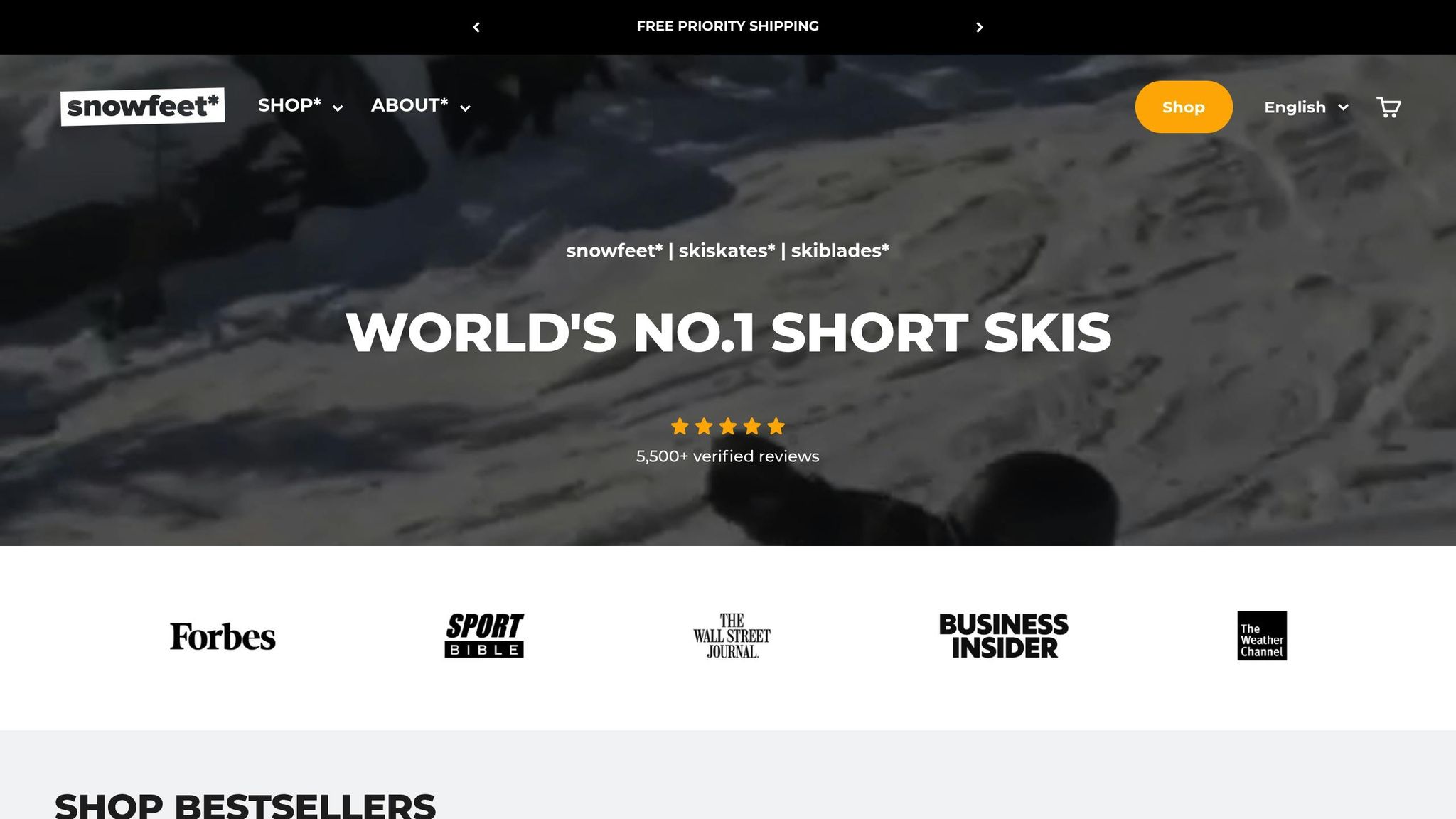
When it comes to skiing, staying safe isn’t just about technique or preparation - it’s also about the gear you use. Snowfeet products take injury prevention seriously, with a design that addresses common risks often associated with traditional long skis from brands like Rossignol, Atomic, and Head.
Design Features That Help Prevent Injuries
Snowfeet’s compact size - ranging from 1.5 to 4 feet compared to the 5- to 6-foot length of traditional skis - plays a big role in keeping your knees safer. Shorter skis mean less knee leverage during turns or falls, which reduces the twisting motions that can lead to injuries. Plus, the smaller turning radius makes it easier to execute turns without overexertion, lowering strain on your body.
The materials and construction of Snowfeet are also designed with safety in mind. Made from lightweight fiberglass, they absorb shocks and vibrations that would otherwise travel straight to your body. Metal ski edges allow for smooth and controlled stops, while the built-in heel brake lets you slow down gradually. And here’s a bonus: you don’t need special ski boots. Snowfeet’s adjustable bindings attach to standard winter boots, offering convenience without compromising safety. At just 3.3 pounds (for the Snowfeet Basic), their lightweight design means falls generate less momentum, reducing the chance of serious injuries.
Another often-overlooked safety perk? Their compact size makes Snowfeet easy to carry around, so you’re less likely to borrow or rent unfamiliar gear - a common cause of skiing accidents.
These thoughtful design elements make Snowfeet a safer alternative to traditional long skis.
Snowfeet vs. Long Skis: A Safety Comparison
Snowfeet’s streamlined design not only reduces strain on your knees but also offers better control, especially on unpredictable terrain. Beginners, in particular, benefit from this ease of use. Long skis can feel bulky and intimidating, but Snowfeet’s design makes skiing more approachable.
| Safety Factor | Snowfeet Products | Traditional Long Skis |
|---|---|---|
| Knee Stress | Minimal leverage on joints | High leverage increases injury risk |
| Control | Easier to maneuver and stop | Harder to control, especially for beginners |
| Fall Impact | Lightweight design means less momentum | Greater mass can lead to more severe impacts |
| Learning Curve | Intuitive for ice skaters and beginners | Steeper learning curve increases accident risk |
This comparison shows how Snowfeet’s design prioritizes safety while making skiing more accessible.
Both Snowfeet Skiskates and Skiblades offer quick, responsive handling, making it easier to adjust to changing slopes. For beginners, these features inspire confidence by blending skiing with a skating-like feel, eliminating the intimidation factor of long skis. And while Snowfeet packs in professional-grade features, they remain an affordable option compared to high-end ski gear.
User feedback consistently highlights Snowfeet’s safety and superior handling, proving that smart design can make skiing both fun and safe.
What to Do After an Injury and Recovery
Even with the best preparation, injuries can still happen. How you handle the situation right after an injury can make all the difference between a minor hiccup and a long-term issue that could sideline you for months.
First Steps After Getting Injured
Start by figuring out if immediate medical attention is necessary. Serious warning signs include intense pain, numbness, or difficulty moving the injured area. Suspect a broken bone? Don’t wait - get in touch with an orthopedic specialist or a sports medicine doctor. For less severe injuries, you can take some quick steps to manage the situation. Apply ice or even snow directly to the area for 10–20 minutes to help with swelling and numb the pain. Elevating the injured limb can also minimize swelling. If things don’t start to improve within three weeks, it’s time to check in with your primary doctor. Once you’ve tackled the immediate concerns, the next step is to focus on recovery so you can eventually get back to skiing.
Recovery and Getting Back to Skiing
After addressing the initial injury, recovery becomes the priority. The timeline can vary - a minor strain might take just a few days, while more serious injuries could mean months of healing. Jumping back into action too quickly is risky and could lead to setbacks, so patience is key. Dr. Abby Stanislaw, a Doctor of Physical Therapy, offers this advice:
"Effective recovery techniques will help you bounce back faster, stay pain-free, and get back to enjoying all the amazing activities Park City has to offer."
Incorporating active recovery, like walking, cycling, or yoga, can improve circulation and ease tension in healing tissues. Massage therapy is another great option - it can boost blood flow, lower swelling and inflammation, and even help with relaxation to combat fatigue. Other recovery tools, such as cold-water immersion, compression garments, staying hydrated, and eating antioxidant-rich foods, can reduce soreness, swelling, and oxidative stress.
If scar tissue starts to form, it can limit movement and lead to discomfort down the road. That’s why seeing a physical or massage therapist early in the recovery process is a smart move.
When you’re ready to hit the slopes again, consider starting with Snowfeet products. Their short skis are easier to control and require less physical effort for turning and stopping, making them ideal for anyone rebuilding strength and confidence. Plus, their lightweight design reduces fatigue and allows for freer movement, which is especially helpful when regaining balance and endurance. Short skis offer a forgiving option for easing back into skiing:
"Short skis are a fantastic choice for your first foray onto the slopes. They are lightweight, easy to manage, and more forgiving than longer skis."
Conclusion: Safer Skiing with Snowfeet
Skiing injuries like knee ligament tears, wrist fractures, and head injuries don’t have to be part of your winter adventure. By understanding the risks and taking the right precautions, you can significantly reduce your chances of getting hurt.
Staying safe on the slopes comes down to a few key factors: preparation, using the right gear, and skiing within your limits.
One of the biggest safety game-changers is the equipment you choose. Traditional long skis from brands like Rossignol, Atomic, and Head often measure over 160 cm (63 inches). Their length and bulk can make it harder to react quickly in tight situations, which can lead to accidents.
That’s where Snowfeet comes in. With their compact design (ranging from 38 to 120 cm), Snowfeet offers unmatched control and maneuverability. As the Snowfeet Team puts it:
"One of the main reasons snowblades are a great choice is because they're incredibly easy to control. The shorter length makes quick turns simpler, giving you more precision when navigating down the slopes."
This extra control is a game-changer for injury prevention. Snowfeet’s lightweight build reduces fatigue, while their pressure-releasing bindings help protect your knees and ankles. Plus, their smaller size makes them safer in crowded areas, where traditional skis could clip or tangle with others.
For those recovering from injuries, Snowfeet can be a fantastic way to ease back into skiing. Their forgiving design requires less physical effort for maneuvers like stopping and turning, making it easier to rebuild strength and confidence without putting yourself at unnecessary risk.
Ultimately, choosing the right skis can transform your skiing experience. Shorter skis like Snowfeet aren’t just about safety - they’re about enjoying the slopes with confidence and ease. With proper preparation, the right mindset, and Snowfeet underfoot, you can focus on what really matters: having fun while staying safe.
FAQs
What gear should I choose to avoid common skiing injuries?
Choosing the Right Ski Gear for Safety
Picking the right ski gear isn’t just about comfort - it’s a big part of staying safe on the slopes. Start with the basics: protective gear. Helmets, wrist guards, and knee pads are must-haves. They can significantly reduce the risk of serious injuries like concussions, fractures, or ligament tears.
When it comes to skis, consider going for shorter, more maneuverable options like Snowfeet's skiblades or skiskates. Unlike the long skis you’ll find from brands like Rossignol or Atomic, these compact designs make turning a breeze, help you maintain better balance, and give you more control. All of these factors can lower your chances of falls and accidents.
And don’t overlook your ski boots! They need to fit snugly and match your skill level. Boots that are too tight, too loose, or just not right for you can throw off your performance and increase the risk of injury. By focusing on safety and choosing gear that’s stable and easy to handle, you’ll set yourself up for a safer and more enjoyable time on the mountain.
What are the best exercises to get in shape for skiing and avoid injuries?
To get ready for skiing and lower your chances of getting hurt, focus on exercises that target strength, balance, and endurance. Squats and lunges are fantastic for building leg power and improving your stability - key for staying steady on the slopes. Adding planks to your routine strengthens your core, giving you better control and support while skiing. Balance exercises, like working with a stability ball, can also be a game-changer for coordination and help protect your knees from injuries.
Don’t forget about cardio! Activities like running or cycling can boost your stamina, so you’re not wiped out after a few runs. And before you hit the slopes, take a few minutes to warm up with light cardio and dynamic stretches. This preps your muscles and helps keep injuries at bay.
How do Snowfeet products help protect your knees compared to traditional skis?
Snowfeet products, such as skiboards and skiblades, are built with knee safety in mind. Thanks to their shorter length and lightweight design, they’re much easier to control, which reduces the twisting and torque that can put strain on your knees - especially during sharp turns or unexpected falls. This thoughtful design helps lower the risk of common injuries like ACL or MCL tears.
On top of that, Snowfeet gear comes with wider tips and a softer flex. These features not only improve shock absorption but also boost stability, giving you better control on the slopes. For skiers who want to protect their joints and enjoy a smoother ride, these products are a great choice for a safer, more comfortable experience.














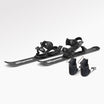






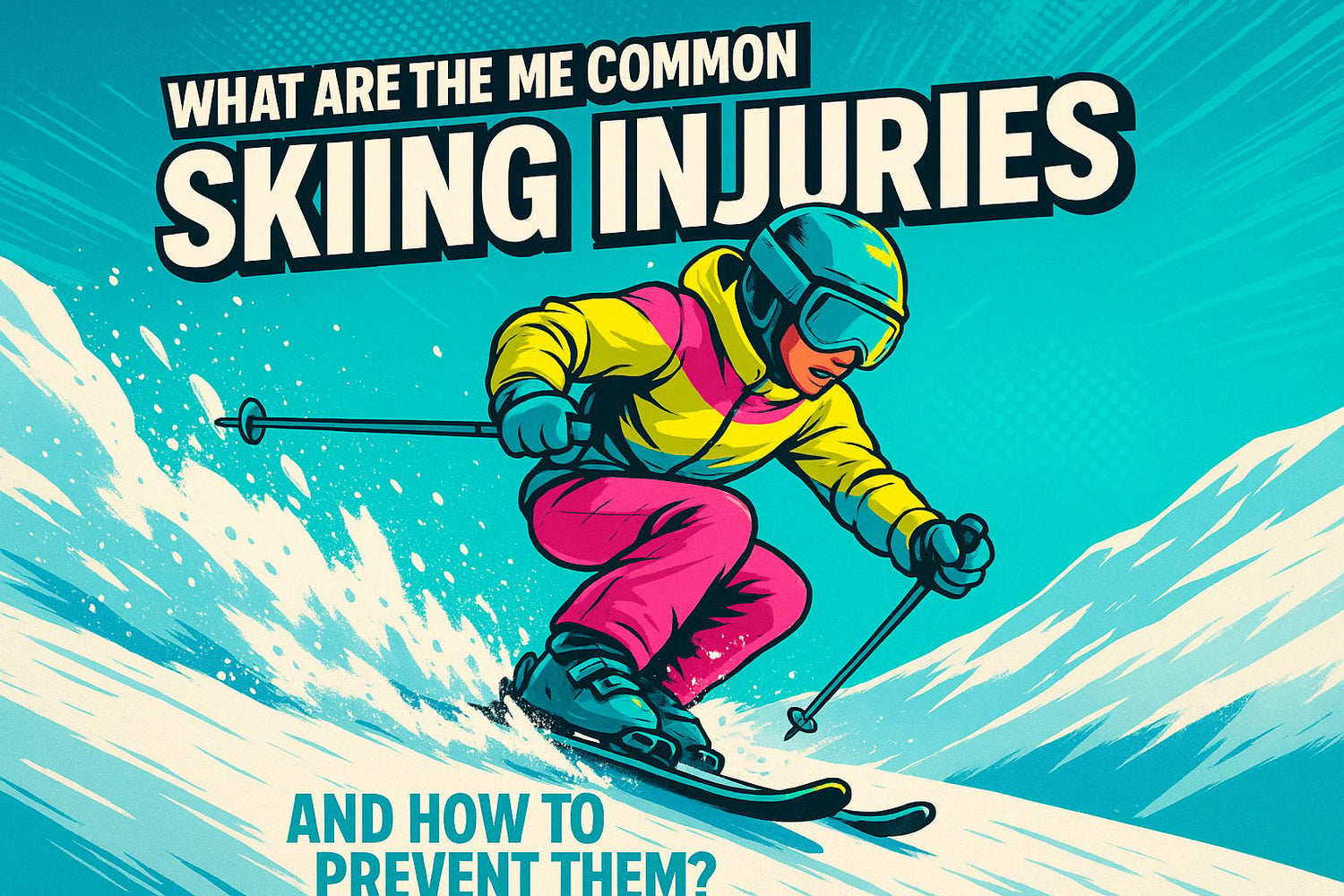

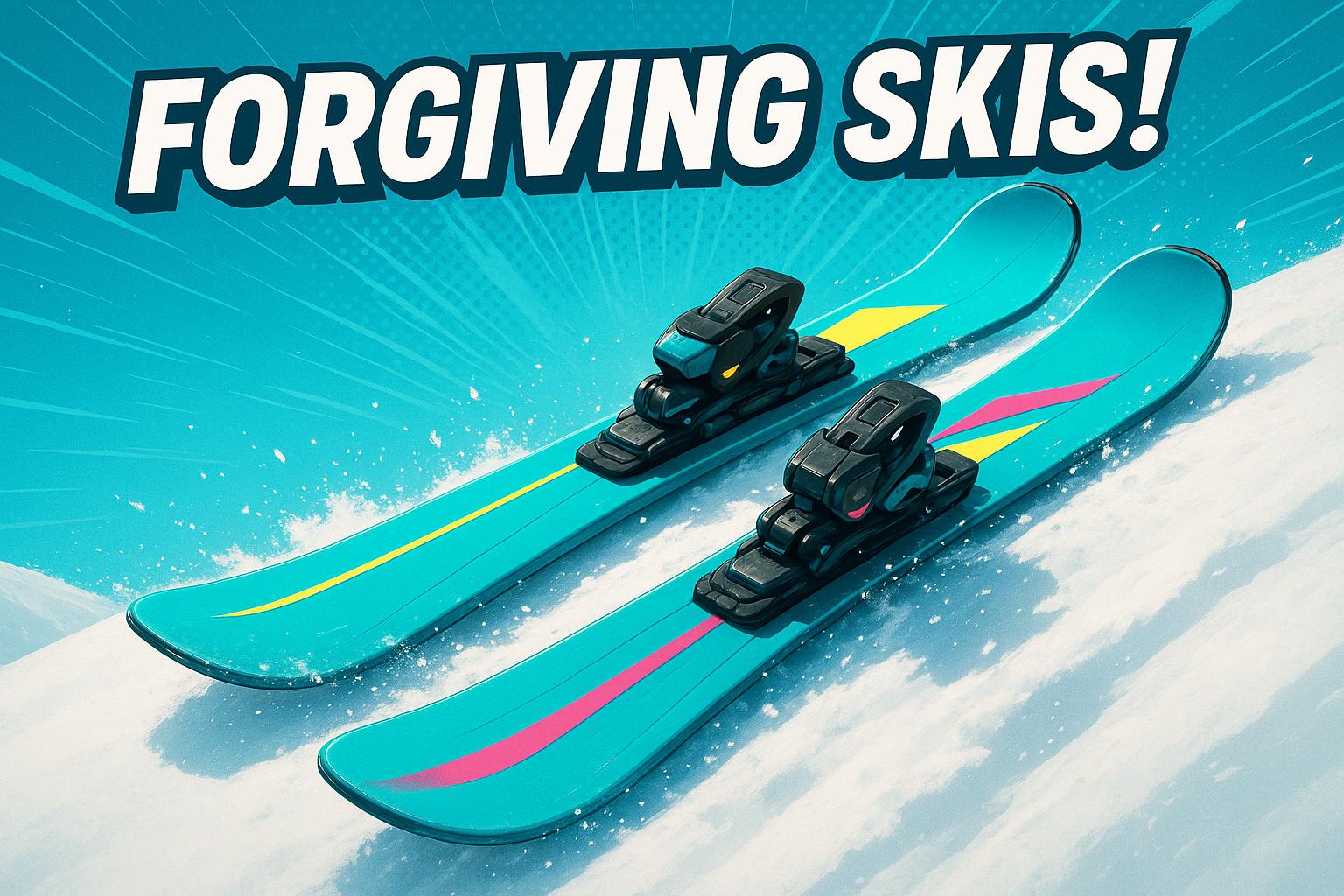










Leave a comment
This site is protected by hCaptcha and the hCaptcha Privacy Policy and Terms of Service apply.